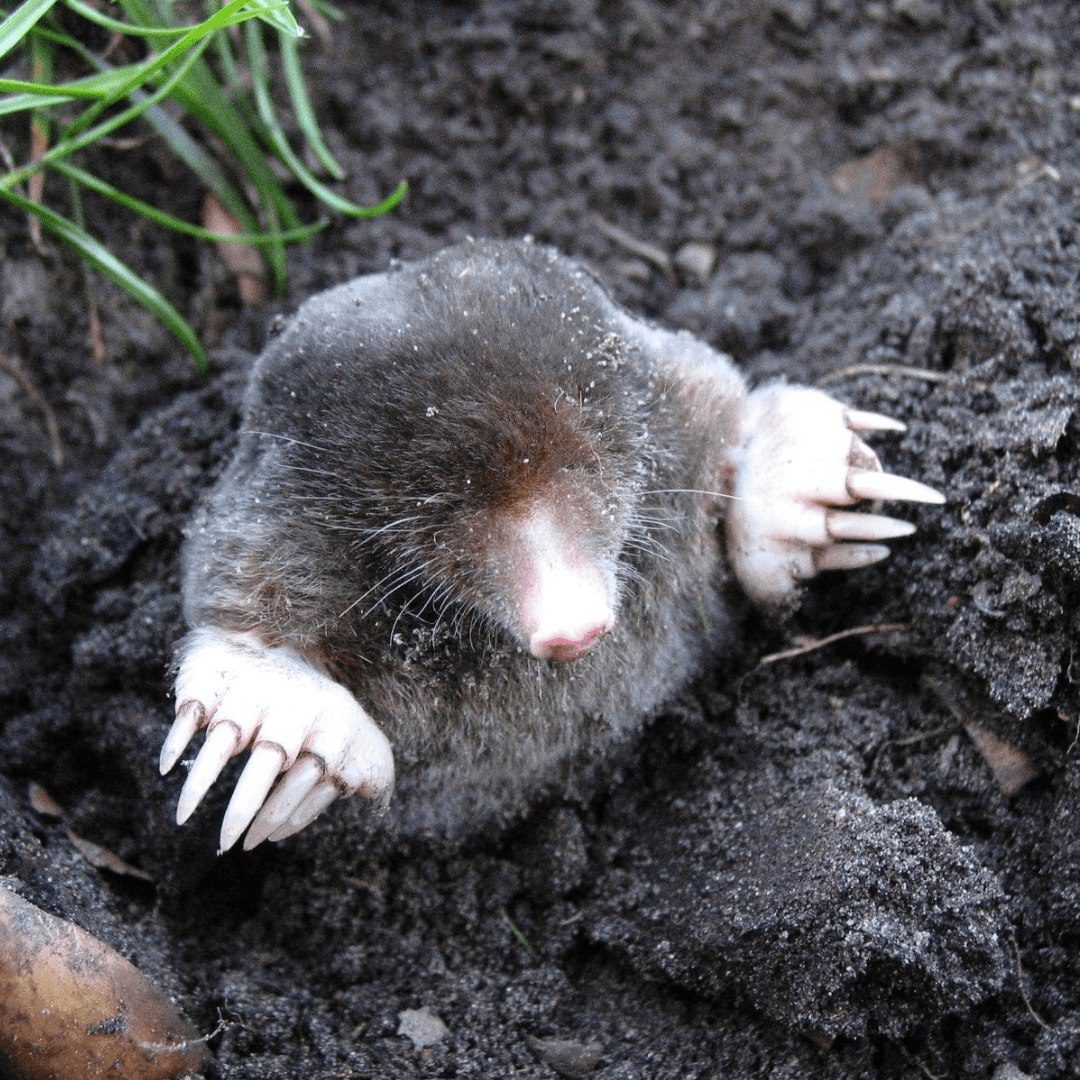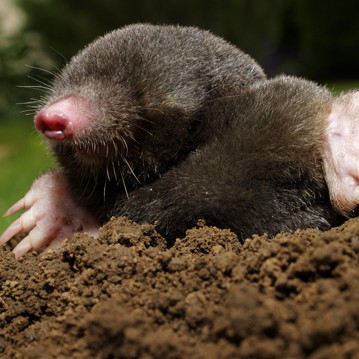Moles
Introduction to Moles
Moles are small, burrowing mammals known for their extensive tunneling activities. These creatures belong to the family Talpidae and are found in various regions, primarily inhabiting lawns, gardens, and agricultural fields. While moles play a crucial role in aerating the soil and controlling insect populations, their burrowing can cause significant damage to lawns and gardens, creating unsightly molehills and tunnels. Understanding the biology, habits, and effective prevention methods for moles is essential for managing their presence and minimizing their impact on your property.
Recognition
Moles are small mammals, typically measuring 4 to 7 inches in length, with a cylindrical body covered in velvety fur. Their fur is usually gray to black. Moles have very small eyes and ears that are often not visible, but they have large, spade-like forelimbs adapted for digging. Their forepaws are broad and have sharp claws, enabling them to efficiently excavate soil. Unlike other small burrowing animals such as voles or gophers, moles create distinct, volcano-shaped molehills at the entrances to their tunnels.
Biology
Moles are solitary creatures, with each mole maintaining its own territory. They reproduce once a year, with females giving birth to a litter of 3 to 5 young in late spring or early summer. Moles have a short gestation period of about 4 to 6 weeks. Juveniles leave the nest to establish their own territories after a few months. Moles have a lifespan of about 3 years in the wild. They are insectivores, primarily feeding on earthworms, grubs, and other soil-dwelling insects. Their diet plays a beneficial role in controlling pest populations, but their tunneling behavior can be problematic for gardeners and homeowners.
Habits
Moles prefer moist, loamy soils that are easy to dig through and rich in insects. They are most active in early morning and late evening, although they can dig tunnels throughout the day. Moles create a network of surface tunnels for hunting and deeper tunnels for living and nesting. The surface tunnels are visible as raised ridges in lawns and gardens, while molehills indicate the entrances to deeper tunnels. Moles do not hibernate and can be active year-round, although their activity may decrease during extremely dry or cold conditions.
Prevention
Preventing mole infestations involves making your yard less attractive to these burrowing pests. Reduce the insect population in your soil by using appropriate pesticides or natural predators to control grubs and other soil insects. Maintain a dry environment by improving drainage and avoiding overwatering your lawn. Create physical barriers by installing underground fencing around gardens or flower beds. Use mole repellents or deterrents, such as castor oil-based products, to make the soil less palatable. Regularly inspect your property for signs of mole activity and take early action to prevent extensive damage.
Professional
If moles become a persistent problem, professional pest control services can provide effective solutions. STL Pest Control offers comprehensive treatments to manage mole populations and protect your property. Their technicians are trained to identify mole tunnels and apply appropriate control methods, including trapping and baiting. In severe cases, they may recommend ongoing maintenance plans to keep mole populations under control. Professional services ensure thorough and long-lasting control, providing peace of mind and a well-maintained lawn and garden.



Our Office









